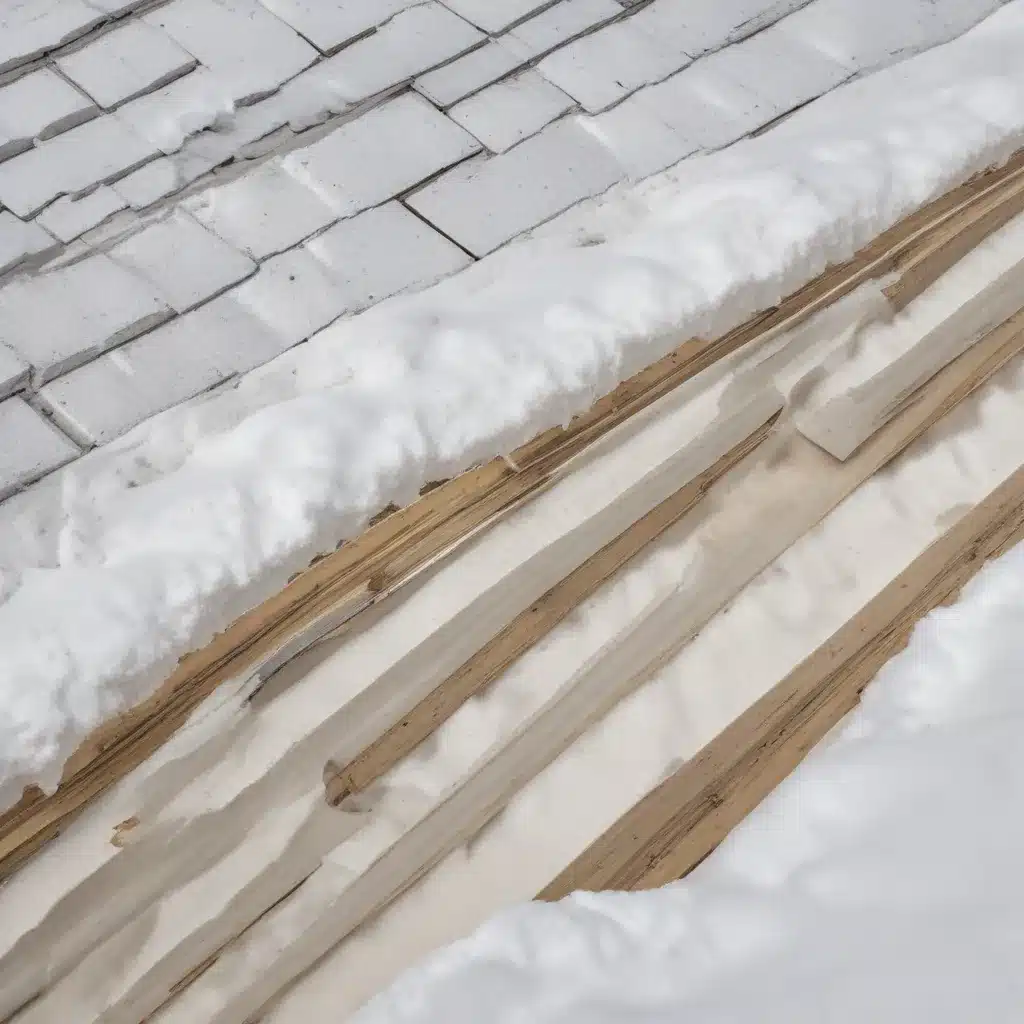
The Importance of Roof Insulation
As a seasoned roofing professional, I understand the critical role that roof insulation plays in maintaining energy efficiency and enhancing the overall comfort of a home, especially during the winter months. Proper insulation acts as a thermal barrier, preventing heat transfer between the interior and exterior of the building, ultimately reducing the strain on heating systems and lowering energy bills.
Understanding Heat Transfer
Heat naturally flows from warmer to cooler areas, and without adequate insulation, a significant amount of heat can be lost through the roof. This heat transfer occurs through three primary mechanisms: conduction, convection, and radiation. Conduction allows heat to pass through solid materials, while convection facilitates the movement of heat through air or liquid. Radiation, on the other hand, involves the emission of infrared waves that carry heat energy.
The Benefits of Roof Insulation Retrofits
Upgrading the insulation in your roof can provide a range of benefits, including:
-
Improved Energy Efficiency: By minimizing heat loss through the roof, you can significantly reduce the energy required to maintain a comfortable indoor temperature, leading to lower utility bills.
-
Enhanced Comfort: A well-insulated roof helps regulate the temperature throughout your home, preventing hot and cold spots and creating a more consistent and comfortable living environment.
-
Increased Home Value: Homebuyers often prioritize energy-efficient features, and a well-insulated roof can be a valuable selling point, potentially increasing the resale value of your property.
-
Reduced Carbon Footprint: Lowering your energy consumption means you’re also reducing your environmental impact, contributing to a more sustainable future.
Assessing Your Existing Roof Insulation
Before embarking on a roof insulation retrofit, it’s essential to evaluate the current state of your insulation. Consider the following factors:
Insulation R-Value
The R-value is a measure of an insulation material’s resistance to heat flow. The higher the R-value, the more effective the insulation. According to the National Parks Service, the recommended R-value for attics in most climates is R-38 or higher.
Insulation Type and Condition
Common insulation materials used in roofs include fiberglass, cellulose, and rigid foam. Inspect the existing insulation to check for any damage, compression, or gaps that could compromise its effectiveness.
Ventilation Considerations
Proper attic ventilation is essential to maintain a healthy indoor environment and prevent moisture buildup. Ensure that any existing vents, such as ridge vents or soffit vents, are not obstructed by the new insulation.
Upgrading Your Roof Insulation
Once you’ve assessed your current insulation, it’s time to explore the options for upgrading. Here are some strategies to consider:
Adding Rigid Foam Insulation
One effective approach is to install rigid foam insulation, such as expanded polystyrene (EPS) or extruded polystyrene (XPS), directly above the existing roof sheathing. This can significantly improve the thermal performance of your roof assembly. Greenbuildingadvisor.com provides valuable insights on the installation process and considerations.
Layering Insulation Materials
Another option is to combine different insulation materials, such as fiberglass or cellulose in the attic floor with rigid foam above the roof sheathing. This layered approach can help maximize the overall R-value and address any potential gaps or thermal bridges.
Radiant Barrier Installation
In some climates, installing a reflective radiant barrier on the underside of the roof sheathing can enhance the insulation’s performance by reducing the amount of heat absorbed through the roof. This strategy is particularly effective in hot, sunny regions.
Considerations for Existing Attic Spaces
If you have a finished attic or a “livable” attic space, the retrofit process may require additional steps, such as creating a ventilation channel between the new insulation and the roof sheathing. Consulting with a professional is recommended to ensure compliance with building codes and safety standards.
Choosing the Right Roofing Materials
When undertaking a roof insulation retrofit, it’s also an opportune time to consider upgrading your roofing materials. Here are some factors to keep in mind:
Reflective Roofing Options
Choosing a light-colored or highly reflective roofing material, such as metal or cool asphalt shingles, can further enhance the thermal performance of your roof. These materials help to reduce solar heat absorption, lowering the overall cooling load on your home.
Insulation-Friendly Roofing Systems
Some roofing systems, such as standing seam metal roofs or synthetic slate tiles, are designed to accommodate additional insulation layers without compromising the integrity of the system.
Compliance with Local Regulations
Be sure to research and comply with any local building codes or energy efficiency requirements that may apply to your roof insulation and roofing material selection. Some regions, like California, have specific guidelines for cool roofs and insulation levels.
Safety Considerations
Undertaking a roof insulation retrofit can be a complex and potentially hazardous task. It’s crucial to follow all safety protocols and guidelines to protect both yourself and your property. Some key safety considerations include:
- Proper personal protective equipment (PPE), such as gloves, goggles, and respiratory protection
- Secure and stable access to the roof, using appropriate ladders or scaffolding
- Careful handling and disposal of any existing insulation materials, especially if they contain asbestos
- Ensuring the structural integrity of the roof can support the additional weight of the new insulation
Conclusion
Investing in a roof insulation retrofit is a smart and practical way to maximize energy savings, enhance comfort, and contribute to the long-term sustainability of your home. By carefully assessing your existing insulation, upgrading to high-performance materials, and considering complementary roofing solutions, you can unlock the full potential of your roof and create a more energy-efficient living environment.
For more information on roofing services, maintenance, repair solutions, and safety practices, visit the Roofers in Northampton website. Our team of experienced professionals is dedicated to helping homeowners and property owners achieve their goals while prioritizing quality, safety, and energy efficiency.

